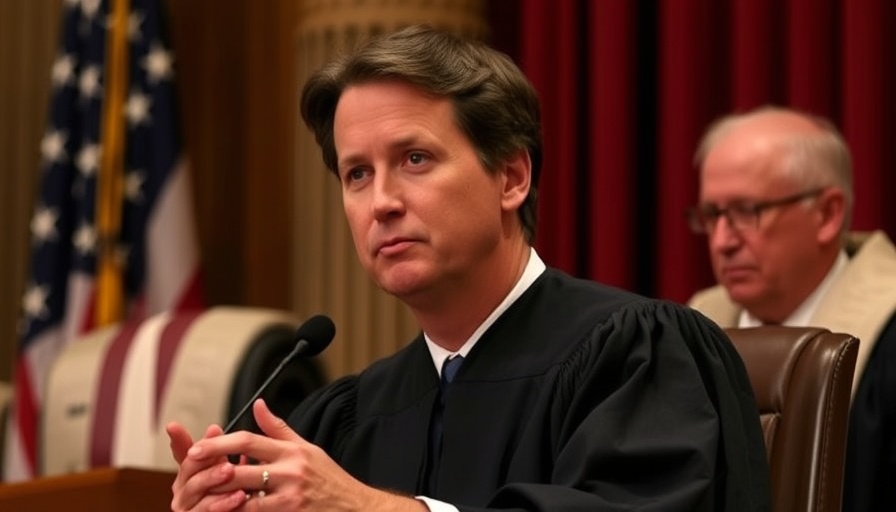
The Supreme Court's Bipartisan Tug-of-War
In an era where political polarization is the norm, the recent decision in Trump v. CASA reflects both the complexities of judicial power and its potential implications. The ruling, which limits lower district courts from issuing "universal injunctions" against executive actions, has prompted various reactions across the political spectrum. While some Democrats express concerns over an increase in executive overreach, Republicans anticipate that it may ease the path for President Trump’s policies.
Understanding the Universal Injunctions Ruling
Justice Brett M. Kavanaugh’s concurrence sheds light on the ruling’s broader implications. He suggests that judicial oversight of executive actions will now hinge more on the Supreme Court, rather than the hundreds of district judges dispersed throughout the country. This shift may not only empower the conservative bench as long as it holds a majority but also serve as a check on executive lawlessness. The case itself originated when Trump asserted that children born in the U.S. to immigrants would not be entitled to citizenship, a claim that contradicts the 14th Amendment’s birthright citizenship clause—yet it was never directly examined by the Court.
The Historical Context of Judicial Power
The origins of judicial power in America can be traced back to the Constitution's framework established in 1789, which did not anticipate the complexities of modern governance. Universal injunctions, once a rarity, began to rise in prevalence as the political climate became increasingly charged, with district judges often acting as arbiters for major executive actions. This trend raises questions about the historical role of lower courts versus the Supreme Court in balancing power between the branches of government.
Potential Outcomes of the Ruling
As the case further unfolds in lower courts, Kavanaugh's insights may prove prescient. Could this new ruling lead to a more restrained executive branch, ultimately curbing overreach? Or will it merely consolidate power within the Supreme Court, where partisan lines may influence decisions to a greater degree? Some argue that this development could lead to an uneven application of justice, especially concerning actions deemed politically charged or ideologically driven.
Judicial Restraint Versus Executive Power
The ruling emphasizes a return to a case-by-case examination of executive orders. For many interested in the overlap of law and politics, this invites a deeper discussion on the lines between judicial restraint and executive overreach. Critics fear that such restraint might embolden the executive branch, allowing laws to be crafted in a manner that evades challenge until they reach a more stable judiciary. Meanwhile, advocates for the ruling posit that it merely restores a balance that had tipped too far toward judicial activism.
Emotional Responses to Legislative Actions
For many, the Supreme Court’s decisions directly influence their daily lives, particularly in areas like immigration, healthcare, and civil rights. The implications of the ruling could evoke fears of uncertainty in immigrant communities, while providing a sense of grounding to proponents of a more powerful executive branch. These sentiments illustrate the human impact of legal decisions, underlining the importance of understanding the nuances behind each ruling.
Conclusion: Understanding and Engaging with Our Judicial System
As this landmark ruling continues to ripple through the judiciary, citizens must engage with these decisions and their implications actively. Understanding how legislative and judicial powers interact is crucial in a democratic society. As the landscape of governance evolves, so too must our discussions about the balance of power.
By fostering informed conversations about judicial decisions and their long-term consequences, we can ensure a more engaged and educated public ready to face the challenges of governance in our modern age.
 Add Row
Add Row  Add
Add 




Write A Comment